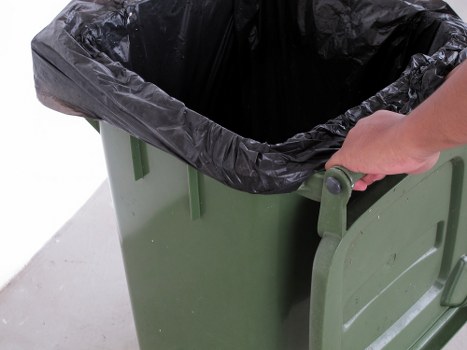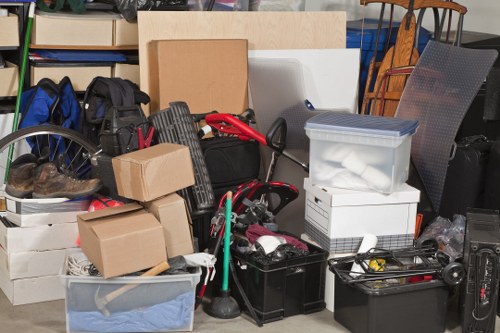Comprehensive Guide to Garden Clearance in Norwood

Maintaining a beautiful garden in Norwood requires regular attention, and one of the most crucial aspects of garden maintenance is garden clearance. Whether you're preparing for a season change, planning a garden renovation, or simply decluttering, proper garden clearance can make a significant difference in the health and aesthetics of your outdoor space.
Garden clearance involves the removal of unwanted debris, dead plants, and overgrown vegetation. It's a task that not only enhances the visual appeal of your garden but also promotes a healthy environment for your plants.
In Norwood, where gardens are an integral part of residential and commercial properties, having a reliable garden clearance service is essential. This guide will walk you through everything you need to know about garden clearance in Norwood, ensuring your garden remains pristine and inviting.

Why Garden Clearance is Essential
Regular garden clearance is vital for several reasons:
- Health of Plants: Removing dead or diseased plants prevents the spread of pests and diseases, ensuring the longevity of healthy plants.
- Safety: Overgrown gardens can become hazards, especially when branches obstruct pathways or block visibility.
- Improved Aesthetics: A clear and well-maintained garden enhances the overall look of your property, making it more appealing to visitors and potential buyers.
- Environmental Benefits: Clearing garden waste responsibly can reduce the environmental impact, promoting a sustainable garden ecosystem.
Understanding these benefits highlights the importance of incorporating garden clearance into your regular maintenance routine.

When to Schedule Garden Clearance
Timing is crucial when it comes to garden clearance. The best times to undertake this task in Norwood are:
- Spring: After the winter months, spring is ideal for clearing out debris and preparing your garden for the growing season.
- Autumn: As the leaves fall and growth slows down, autumn provides another opportunity to tidy up and set the stage for the next year.
- After Adverse Weather: Heavy rains, storms, or frost can damage plants and structures, necessitating a clearance to repair and restore your garden.
Scheduling garden clearance during these times ensures that your garden remains healthy and well-maintained throughout the year.

Steps Involved in Garden Clearance
Professional garden clearance services in Norwood typically follow a systematic approach to ensure thorough and efficient results. Here's an overview of the steps involved:
- Assessment: Inspecting the garden to identify areas that need attention, including overgrown plants, debris, and any potential hazards.
- Planning: Developing a clearance plan that outlines the tasks to be performed and the resources required.
- Debris Removal: Collecting and disposing of garden waste such as leaves, branches, and dead plants.
- Pruning and Trimming: Cutting back overgrown shrubs, trees, and plants to promote healthy growth.
- Weeding: Eliminating unwanted weeds that compete with desirable plants for nutrients and water.
- Cleaning: Tidying up pathways, patios, and other garden features to enhance overall appearance.
Each step is crucial in maintaining a well-organized and flourishing garden.

Choosing the Right Garden Clearance Service in Norwood
Selecting a reliable garden clearance service ensures that the job is done efficiently and to a high standard. Here are some factors to consider when choosing a service provider:
- Experience: Look for companies with a proven track record and extensive experience in garden clearance.
- Reputation: Check reviews and testimonials to gauge customer satisfaction and service quality.
- Licensing and Insurance: Ensure that the service provider is properly licensed and insured to protect against any potential liabilities.
- Environmental Practices: Opt for services that prioritize eco-friendly methods, such as recycling garden waste.
- Comprehensive Services: Choose a provider that offers a full range of services, from clearance to ongoing maintenance.
By considering these factors, you can select a garden clearance service in Norwood that meets your specific needs and standards.

Benefits of Professional Garden Clearance
Engaging a professional garden clearance service offers numerous advantages:
- Time-Saving: Professionals can complete the clearance efficiently, allowing you to focus on other tasks.
- Expertise: They possess the knowledge and skills to handle various garden challenges effectively.
- Proper Equipment: Access to specialized tools ensures thorough and safe clearance.
- Safety: Professionals are trained to manage potentially hazardous tasks, reducing the risk of accidents.
- Enhanced Aesthetics: A professionally cleared garden looks more appealing and well-maintained.
These benefits make professional garden clearance a worthwhile investment for any property owner in Norwood.

DIY Garden Clearance vs. Professional Services
While some homeowners may consider DIY garden clearance, there are several reasons why opting for a professional service is often more advantageous:
- Efficiency: Professionals can complete the job faster and more effectively than most DIY efforts.
- Safety: Handling heavy debris and operating equipment can be dangerous without the proper training.
- Long-Term Health: Proper clearance by experts ensures that plants are pruned and maintained correctly, promoting long-term garden health.
- Equipment Access: Professionals have access to the necessary tools and machinery, which can be costly for individual purchase or rental.
- Stress Reduction: Hiring professionals eliminates the physical and mental stress associated with extensive garden work.
Considering these factors, professional garden clearance services provide a more reliable and stress-free solution compared to DIY methods.

Cost Factors for Garden Clearance in Norwood
The cost of garden clearance can vary based on several factors. Understanding these can help you budget effectively:
- Garden Size: Larger gardens require more time and resources, increasing the overall cost.
- Extent of Clearance: The amount of debris and overgrowth will affect the pricing, with more extensive clearance tasks costing more.
- Accessibility: Gardens that are difficult to access or have steep slopes may require additional equipment or labor, impacting the cost.
- Special Requirements: Services such as hauling away large debris or specialized pruning can add to the total expense.
- Frequency of Service: Regular clearance contracts may offer discounted rates compared to one-time services.
By evaluating these factors, you can better understand the potential costs involved and choose a service that fits your budget.

Eco-Friendly Garden Clearance Practices
Adopting eco-friendly practices during garden clearance helps protect the environment and promotes sustainability. Here are some ways to ensure your garden clearance is environmentally responsible:
- Recycling Garden Waste: Composting green waste and recycling materials reduces landfill use and enriches your soil.
- Sustainable Disposal: Partnering with services that prioritize eco-friendly disposal methods minimizes environmental impact.
- Using Eco-Friendly Products: Opting for natural fertilizers and pesticides supports a healthier garden ecosystem.
- Water Conservation: Implementing water-saving techniques during clearance helps preserve this vital resource.
- Minimizing Chemical Use: Reducing the use of harmful chemicals protects local wildlife and soil health.
Incorporating these practices into your garden clearance routine ensures that your efforts contribute positively to the environment.

Preparing for Garden Clearance
Proper preparation is key to a successful garden clearance. Follow these steps to ensure everything goes smoothly:
- Assess the Garden: Identify areas that need attention and make a list of tasks to be completed.
- Gather Necessary Tools: Ensure you have the required tools and equipment for the job, or discuss them with your service provider.
- Clear Pathways: Remove any obstacles that might hinder access to different parts of the garden.
- Inform Neighbors: If you're hiring a professional service, let your neighbors know about the upcoming work to minimize disruptions.
- Set Clear Expectations: Communicate your goals and any specific requirements to the service provider.
By taking these preparatory steps, you can facilitate an efficient and effective garden clearance process.

Post-Clearance Garden Maintenance
Once the garden clearance is complete, maintaining the cleared areas is essential to prevent future overgrowth and ensure lasting results. Here are some maintenance tips:
- Regular Weeding: Keep weeds in check by removing them regularly before they can spread.
- Pruning: Continuously prune plants to maintain their shape and encourage healthy growth.
- Mulching: Apply mulch to retain soil moisture, suppress weeds, and improve soil quality.
- Irrigation: Ensure plants receive adequate water, especially during dry periods.
- Periodic Inspections: Regularly inspect your garden for signs of pests, diseases, or other issues that need attention.
Implementing these maintenance practices helps sustain the benefits of garden clearance and keeps your Norwood garden thriving.

Common Challenges in Garden Clearance
Garden clearance can present several challenges, especially in areas like Norwood with specific climate and environmental conditions. Understanding these challenges can help you prepare and address them effectively:
- Weather Conditions: Unpredictable weather can delay the clearance process or complicate tasks. Planning around seasonal changes can mitigate this issue.
- Debris Volume: Large volumes of garden waste require efficient removal methods and adequate disposal space.
- Access Constraints: Limited access to certain garden areas can make clearance more difficult and time-consuming.
- Plant Variety: Diverse plant species may require specialized knowledge for safe and effective clearance without harming desirable plants.
- Equipment Needs: Handling heavy or bulky debris might necessitate the use of specific tools or machinery.
By anticipating these challenges, you can work with your garden clearance service to develop strategies that overcome them effectively.

Seasonal Garden Clearance Tips
Each season presents unique opportunities and challenges for garden clearance. Tailoring your approach to the seasons can enhance the effectiveness of the process:
- Spring Clearance:
- Remove winter debris such as fallen leaves and dead branches.
- Prune shrubs and trees to encourage new growth.
- Prepare soil by aerating and adding compost.
- Plant new flowers and vegetables to refresh the garden.
- Summer Clearance:
- Control weeds to prevent them from taking over the garden.
- Trim overgrown plants to maintain shape and health.
- Maintain irrigation systems to ensure plants receive adequate water.
- Monitor for pests and diseases, taking prompt action if needed.
- Autumn Clearance:
- Collect fallen leaves and debris to prevent mold and pests.
- Trim and prune plants before winter sets in.
- Prepare garden beds for the dormant season by adding mulch.
- Store gardening tools and equipment to protect them from the elements.
- Winter Clearance:
- Perform light clearance tasks, such as removing dead plants and debris.
- Plan garden layouts and make a list of areas to address in the spring.
- Protect sensitive plants from frost and harsh weather.
- Review and repair garden structures if necessary.
Adapting your garden clearance strategy to each season ensures year-round garden health and beauty.

Tools and Equipment for Garden Clearance
Having the right tools and equipment is essential for effective garden clearance. Here are some common tools used by professionals:
- Pruners and Shears: For trimming and shaping plants and shrubs.
- Rakes: To collect leaves and debris efficiently.
- Chainsaws: Useful for cutting down larger branches and trees.
- Wheelbarrows: To transport heavy debris and garden waste.
- Gloves and Protective Gear: To ensure safety while handling rough materials.
- Loppers: For cutting thicker branches that pruners can't handle.
- Hedge Trimmers: To maintain the shape and size of hedges.
Investing in quality tools can make garden clearance tasks more manageable and efficient.

Legal Considerations for Garden Clearance
When undertaking garden clearance, especially in a populated area like Norwood, there are legal considerations to keep in mind:
- Waste Disposal Regulations: Ensure that garden waste is disposed of according to local regulations to avoid fines or penalties.
- Protected Species: Some plants and trees may be protected by law. Removing or damaging them can result in legal consequences.
- Building Permissions: Significant alterations to your garden, such as removing large trees or structures, might require permits.
- Neighbor Considerations: Clearing debris or trimming trees that are adjacent to neighboring properties can affect boundaries and may need permission.
- Health and Safety Laws: Adhere to safety standards to protect yourself and workers involved in the clearance process.
Being aware of and complying with these legal aspects ensures a smooth and trouble-free garden clearance experience.

Enhancing Garden Clearance with Landscaping
Garden clearance is often the first step toward a more ambitious landscaping project. Here's how clearance can complement your landscaping efforts:
- Creating Space: Removing excess vegetation and debris provides a clean slate for new plantings and garden features.
- Improving Soil Quality: Clearing dead plants and adding compost enhances soil fertility, benefiting future landscaping projects.
- Design Flexibility: A cleared garden allows for more creative and flexible landscape designs, tailored to your preferences.
- Installation of Features: With a clear garden, it's easier to install patios, paths, water features, and other landscaping elements.
- Sustainable Practices: Integrating eco-friendly landscaping solutions with garden clearance promotes sustainability and environmental health.
Combining garden clearance with thoughtful landscaping can transform your outdoor space into a stunning and functional area.

Maintaining Wildlife-Friendly Gardens Post-Clearance
While garden clearance is essential, it's also important to consider the impact on local wildlife. Here are ways to maintain a wildlife-friendly garden after clearance:
- Leave Some Green Spaces: Retaining patches of wildflowers and native plants provides habitat for beneficial insects and birds.
- Install Bird Feeders and Baths: These features attract birds and support their survival.
- Use Natural Pest Control: Encourage predators like ladybugs and spiders to manage pest populations naturally.
- Provide Shelter: Incorporate elements like birdhouses, bat boxes, and hedgehog houses to offer shelter for various species.
- Minimize Chemical Use: Reducing pesticides and herbicides protects wildlife and promotes a balanced ecosystem.
By adopting these practices, you can ensure that your garden remains a haven for wildlife while maintaining its beauty and order.

Innovative Techniques in Garden Clearance
Advancements in garden clearance techniques have made the process more efficient and environmentally friendly. Here are some innovative methods being used:
- Mulching: Shredding garden waste into mulch provides a useful byproduct that can enrich soil and suppress weeds.
- Green Waste Recycling: Converting garden debris into compost reduces landfill waste and promotes soil health.
- Mechanical Clearing: Using machinery like brush cutters and mulchers speeds up the clearance process, especially in dense or large gardens.
- Selective Pruning: Targeted pruning techniques ensure that only the necessary parts of plants are removed, promoting healthier growth.
- Integrated Pest Management: Combining biological, cultural, and mechanical methods to manage pests during clearance activities.
Incorporating these innovative techniques can enhance the effectiveness and sustainability of garden clearance efforts.

Case Studies: Successful Garden Clearances in Norwood
Examining successful garden clearance projects can provide valuable insights and inspiration. Here are a few case studies from Norwood:
- The Smith Residence:
- Challenge: An overgrown garden with invasive species and accumulated debris.
- Solution: A comprehensive clearance plan was implemented, including the removal of invasive plants, debris hauling, and soil aeration.
- Outcome: The garden was transformed into a tidy, vibrant space with new plantings and improved soil health.
- Green Thumb Nursery:
- Challenge: Seasonal buildup of garden waste affecting the nursery's operations.
- Solution: Regular clearance schedules were established, incorporating eco-friendly waste disposal and recycling practices.
- Outcome: The nursery maintained a clean environment, enhancing customer experience and plant health.
- Community Park:
- Challenge: Large-scale garden areas with extensive debris and overgrown vegetation.
- Solution: A team of professionals conducted a thorough clearance, followed by landscaping improvements and ongoing maintenance plans.
- Outcome: The park became a well-maintained, attractive public space, encouraging community use and enjoyment.
These case studies demonstrate the positive impact of effective garden clearance and the importance of professional services in achieving desired outcomes.

Future Trends in Garden Clearance
The field of garden clearance is evolving, with new trends emerging to meet modern demands. Here are some future trends to watch:
- Automation and Robotics: The use of robotic tools for tasks like weeding and pruning is on the rise, increasing efficiency and precision.
- Smart Garden Management: Integrating technology for real-time monitoring and management of garden health and clearance needs.
- Eco-Friendly Innovations: Developing more sustainable clearance methods, such as advanced composting techniques and zero-waste practices.
- Customization: Personalized garden clearance services tailored to individual garden designs and preferences.
- Emphasis on Biodiversity: Promoting diverse plant species and wildlife-friendly practices within clearance efforts.
Staying informed about these trends can help garden clearance services and homeowners alike to adopt the latest practices for optimal garden health and sustainability.

Conclusion
Garden clearance in Norwood is a vital component of effective garden management. By understanding its importance, timing, and the benefits of professional services, homeowners and property managers can ensure their gardens remain healthy, safe, and aesthetically pleasing. Incorporating eco-friendly practices and staying abreast of emerging trends further enhances the sustainability and efficiency of garden clearance efforts.
Whether you're undertaking garden clearance yourself or hiring professionals, the key is to approach the task methodically and with a clear plan. With the right strategies and support, you can transform your Norwood garden into a beautiful and thriving outdoor space.
Contact us today to book your garden clearance service and take the first step towards a revitalized garden!